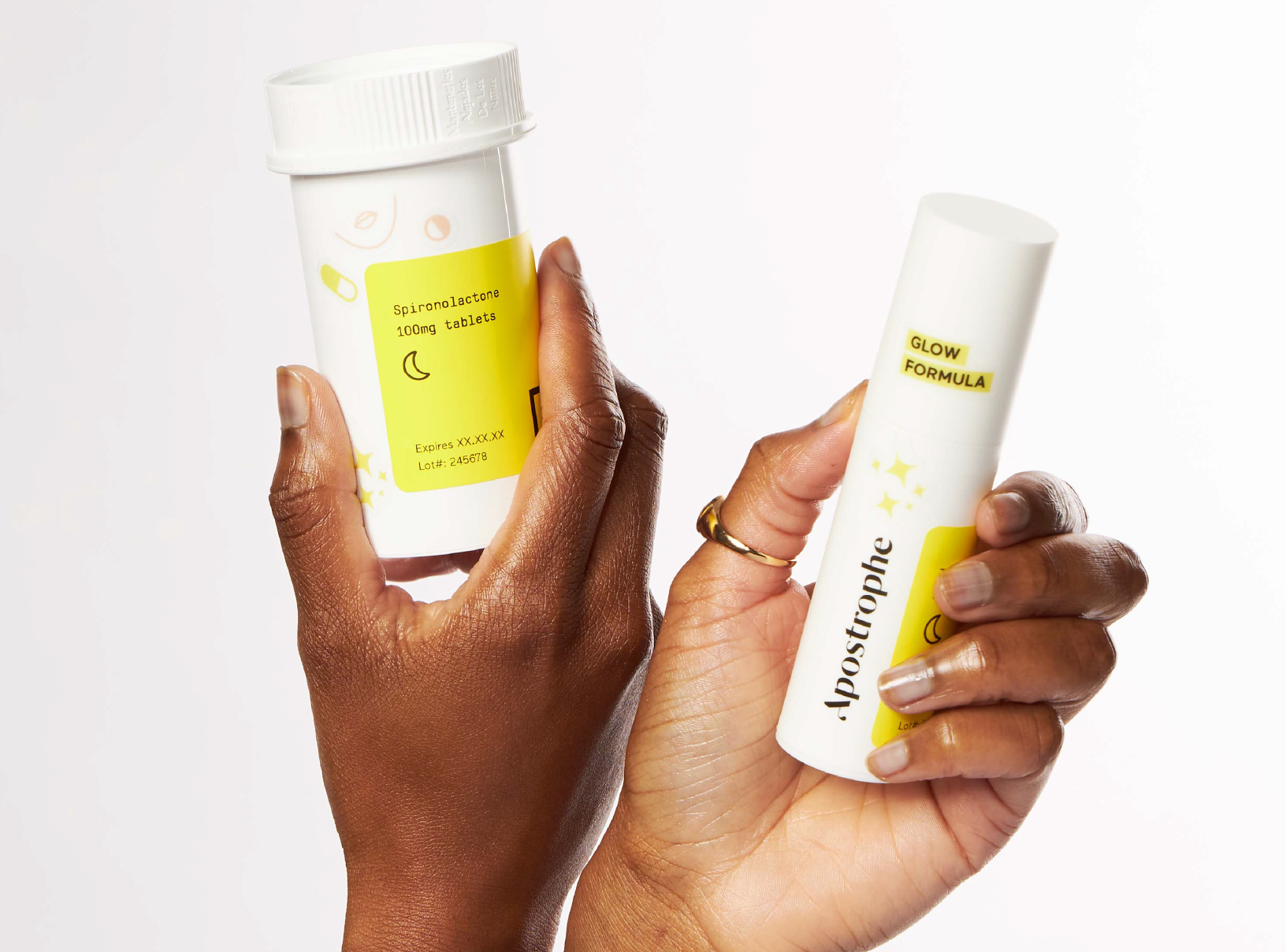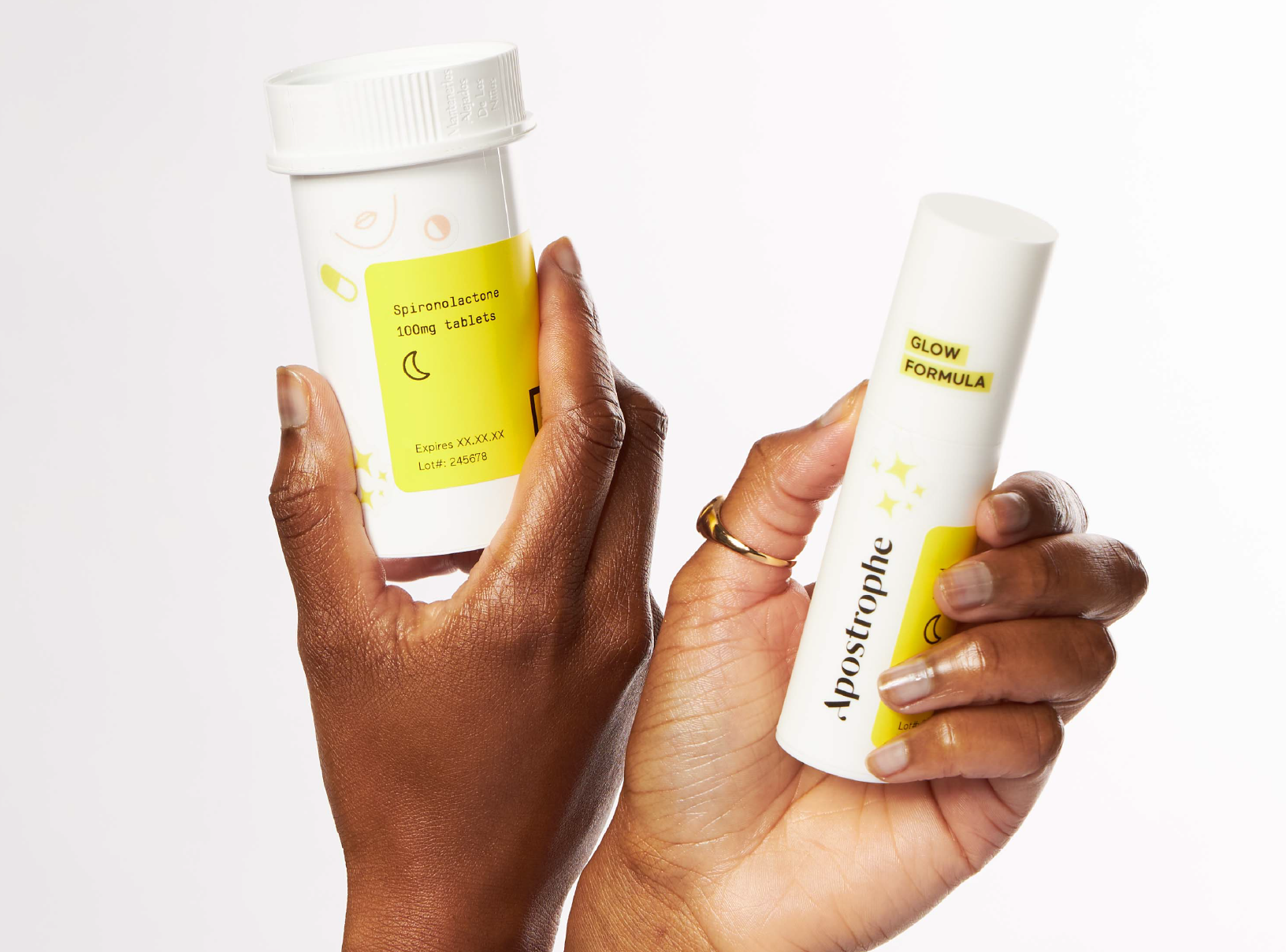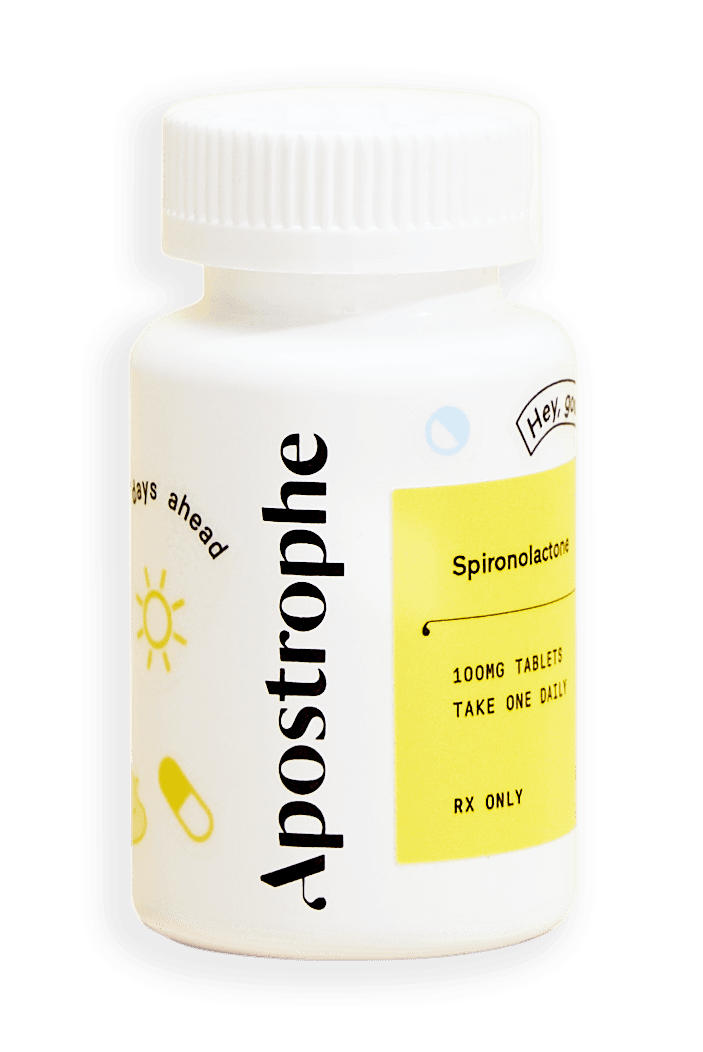Apostrophe Treatments
A Winning Combination: Oral + Topical Treatment


SHARE
Apostrophe Treatments
A Winning Combination: Oral + Topical Treatment
Medically reviewed by Aimee Paik, MD
Written by Apostrophe Team
Last updated 8/1/2024
By the time most of us are willing to spend time, energy, and money to see a dermatologist for acne we’ve likely exhausted drugstore options, over-the-counter “systems,” and maybe even tried a diet change or two. One prescription strength treatment is powerful, but sometimes more really is... more. For treating persistent breakouts, dermatologists will often prescribe a combination of topical and oral medication: one tackles inflammation, bacteria, and oil at the surface while the other works on the systemic root causes of your acne. These treatments work in harmony to get breakouts under control.
There are a few reasons why approaching your acne from different angles can be a good idea:
Preventing antibiotic resistance: The development of antibiotic-resistant bacteria is a big concern amongst doctors and scientists. Both topical antibiotics like clindamycin and oral antibiotics like doxycycline can cause antibiotic resistance if taken alone for long periods of time. One way to minimize this risk is by using a topical and oral treatment together since it is more difficult for germs to become resistant to two treatments at once.
Avoiding the “purge:” While you may not be able to avoid the dreaded purge altogether, using a combination of oral and topical treatments can help take the edge off. For instance, the dermatology providers on our platform may prescribe tretinoin along with a short-term oral antibiotic. Tretinoin is a very effective treatment that can address acne as well as fine lines, texture, and dull skin. An oral antibiotic helps to curb initial breakouts that can occur when you begin tretinoin so you can be on your way to clear skin faster. We recommend consulting with a dermatology provider to get your tretinoin prescription online. They can create a custom treatment plan for you and your skin!
Address all the causes: Using oral and topical medications together can ensure you address all the causes of your acne. Hormonal roots can be addressed with spironolactone or contraceptive pills while topical antimicrobials tackle any acne-causing bacteria on the surface of your skin. Most topical antibiotics also reduce inflammation to help your skin heal from existing bumps and breakouts. Covering your bases with a mix of topicals and orals makes for a more effective and efficient treatment.
At the end of the day, a dermatology provider will provide you with the routine that is best for your skin’s unique needs! Whether it’s one treatment or four, it’s always smart to follow the advice of your provider and stick with your treatment plan. Getting completely clear can take time, but with prescription treatment and a dermatology provider on your side, you can’t go wrong!
Have any burning questions about acne treatment? Ask us on Twitter @hi_apostrophe.
Shop this post

Oral Spironolactone

Oral doxycycline

Tretinoin
Like what you just read? Sign up for our email list to get the scoop on skincare science delivered straight to your inbox.

Deep Dives
A dermatologist shares his thoughts on the recent studies about benzoyl peroxide and benzene.
Read More
Education
What is milia?
What is milia? Today, we’re jumping into one type of bump that you may have heard about most commonly in infants — milia.
Read More
Education
Best moisturizer for acne-prone skin
If you have combination acne-prone skin, figuring out which moisturizer is best for your skin might be tough. In this guide, we break down the best moisturizer for combination, acne-prone skin.
Read More